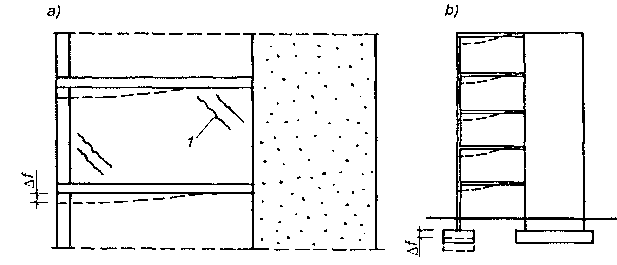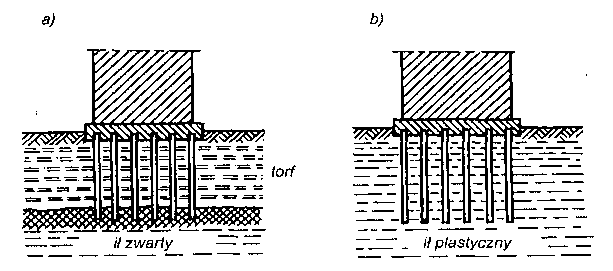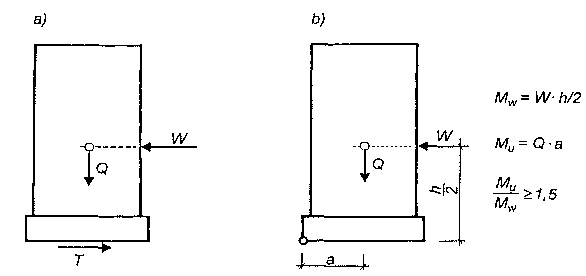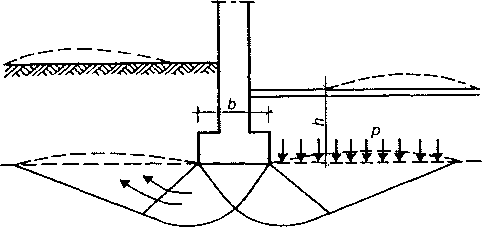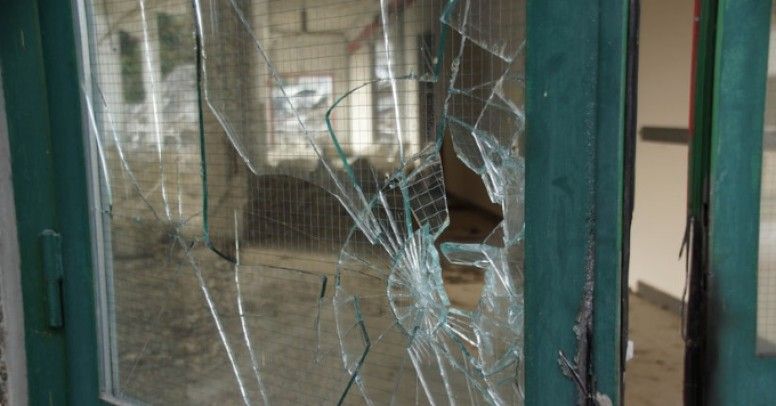Fundament jest to część budowli, która przenosi na podłoże gruntowe wszystkie obciążenia stałe i zmienne działające na budowlę. Budowla, fundament i podłoże gruntowe współpracują ze sobą. Współpraca ta zależy od rodzaju konstrukcji budowli, fundamentu i rodzaju podłoża. Górne warstwy gruntu, bliższe powierzchni terenu są z reguły słabsze. Nośność podłoża, gruntowego zależy od rodzaju gruntu. W przypadku niedostatecznej nośności podłoża występują najczęściej znaczne osiadania fundamentów. Jeśli w podłożu tej samej budowli występują grunty należące do różnych klas, powstaje wówczas niejednakowe osiadanie fundamentów, które może być przyczyną uszkodzeń budynków.
W normie PN-86/B-02480 podano podział gruntów uwzględniający takie cechy, jak: pochodzenie, spękanie, uziarnienie, zagęszczenie, wilgotność, plastyczność i zawartość części organicznych.
Ze względu na pochodzenie przyjmuje się następujący podział gruntów:
a) grunty rodzime: skaliste, nieskaliste mineralne oraz nieskaliste organiczne,
b) grunty nasypowe.
Grunty skaliste
Grunty skaliste — ze względu na wytrzymałość — dzielą się na twarde o wytrzymałości powyżej 5 MPa oraz miękkie o wytrzymałości poniżej 5 MPa. Ponadto ze względu na stopień spękania rozróżnia się skały:
— lite bez widocznych spękań,
— mało spękane o szczelinach występujących nie gęściej niż co 1,0 m i szerokości szczelin mniejszej od 1,0 mm,
— średnio spękane o szczelinach występujących gęściej niż co 1,0 m i szerokości szczelin nie większej od 1,0 mm, lub o szczelinach występujących nie gęściej niż co 1,0 m i szerokości większej niż 1,0 mm,
— bardzo spękane o szczelinach szerszych niż 1,0 mm i występujących gęściej niż co 1,0 m.
Skały lite stanowią dobre podłoże dla fundamentów. Przy posadowieniu fundamentów należy jednak sprawdzić, aby skały te nie miały zbyt dużego stopnia spękania i zwietrzenia, które występuje bliżej powierzchni terenu. Budowle posadowione częściowo na skale litej i częściowo na zwietrzelinie wykazują zwykle uszkodzenia. Należy zatem dążyć do posadowienia wszystkich fundamentów na skale litej, albo tylko na zwietrzelinie skalnej, przy czym zaleca się sprawdzenie w czasie wykonywania wykopów, czy na głębokości przynajmniej 1,0 m od spodu fundamentu nie występują skały lub bloki skalne.
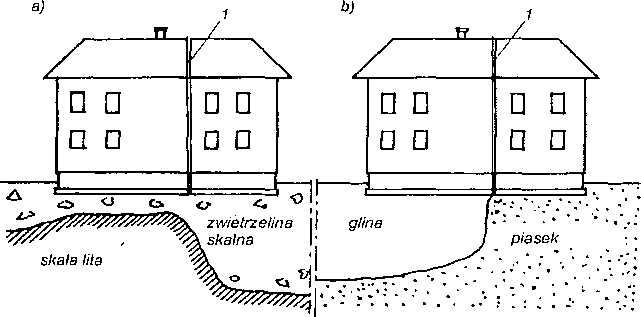 Posadowienie budynków na niejednorodnym gruncie: a) na skale i zwietrzelinie, b) na glinie i piasku; 1 — dylatacja.
Posadowienie budynków na niejednorodnym gruncie: a) na skale i zwietrzelinie, b) na glinie i piasku; 1 — dylatacja.
W przypadku stwierdzenia występowania skały litej na głębokości 1,0 m należy tak wykonać fundamenty, aby budynki nie doznawały uszkodzeń na skutek nierównomiernego osiadania. Osiągnąć to można przez podział budynku dylatacjami przechodzącymi przez całą jego wysokość.
Jeśli warstwy gruntu są tak ułożone, że powodować będą nierównomierne osiadanie, należy również stosować dylatacje przy posadowieniu budynku na gruntach nieskalistych.

